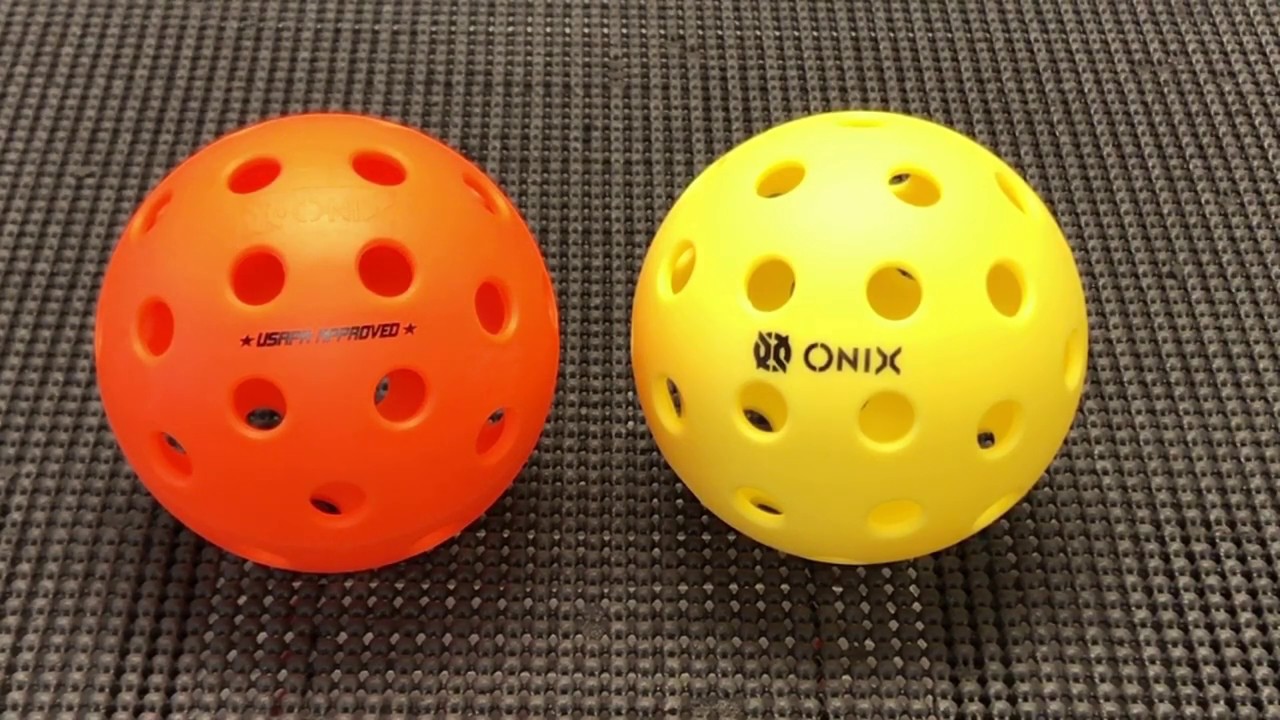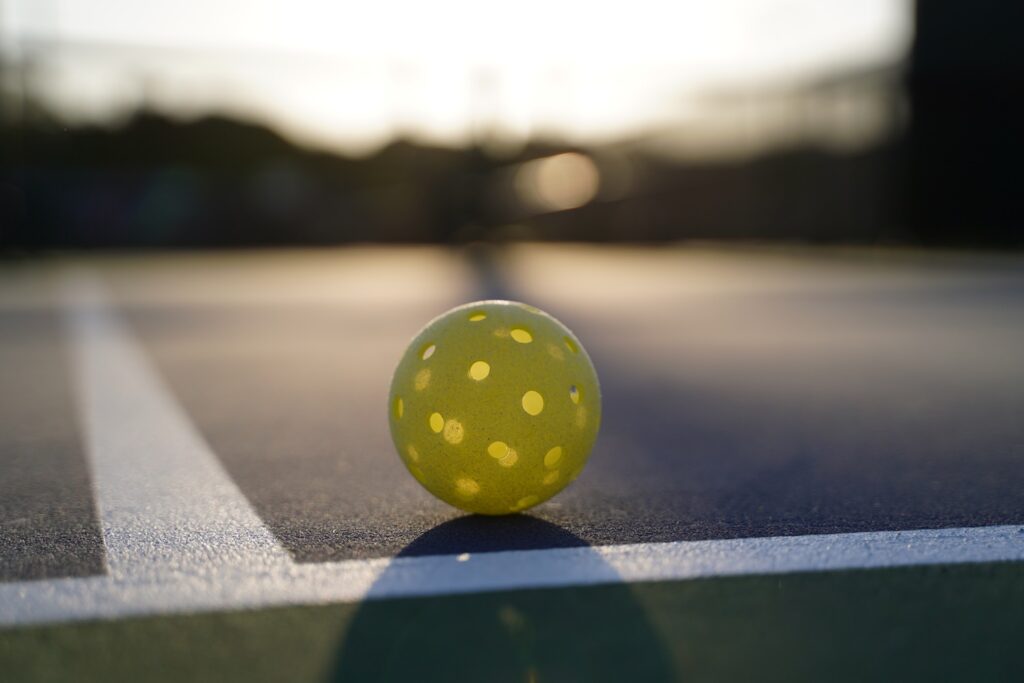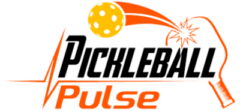
One of the greatest things about the sport of pickleball is that it can be played both indoors and outdoors. However, you may find yourself forced to play indoors whenever the temperature out there plummets or the weather gets too windy. Also, if you’re used to playing indoors only, your friends may decide one day that they want to try playing in the outdoors. So, you may have found yourself thinking, is there a difference between indoor vs outdoor pickleballs?
If you want to take your pickleball skills to the next level, you have to learn how to play in both situations, regardless of your preference. You might think that playing indoors is similar to playing outdoors, but there are a few variations that need to be taken into account, one of which is the type of pickleball balls you’re going to use. Let’s get into breaking down the differences between indoor vs outdoor pickleballs!
Types of Pickleball Balls
Pickleballs are divided into two types: indoor pickleballs and outdoor pickleballs. The differences between indoor vs outdoor pickleballs are crystal clear and every pickleball player should be aware of them. You’ll find that most pickleball manufacturers tend to create both types.
Indoor Pickleballs
Indoor pickleballs have larger holes than the ones present in outdoor pickleballs. The feature 26 drilled holes. Generally, indoor pickleballs are much softer and easier to control than outdoor models. On the flip side, it can be quite challenging to slam an indoor pickleball because it will usually have more drag than its outdoor counterpart.
Indoor pickleballs usually have more textures than outdoor models, which allows for better spin. Additionally, they have longer rallies and they’re slightly smaller and lighter in weight. An indoor pickleball won’t crack very easily like an outdoor ball. However, soft spots start developing when an indoor ball gets worn out.
Due to their lightweight body, indoor pickleballs are highly affected by wind, which is why they’re called indoor pickleballs and should not be used in outdoor situations. The lightweight body also makes these balls a lot quieter than outdoor models and it hurts less to be hit with an indoor ball than an outdoor one.
Best Indoor Pickleballs

Optic Speed Indoor Pickleball Balls.
For when I play indoor pickleball, I use PCKL Optic Indoor Pickleballs. They are ready to drop, drive and slam straight out of the pack.
Optic Pickleballs deliver exceptionally true flight, bounce and playability. The precision-seam welding offers great durability in all temperatures, providing greater structural stability and longevity.
Pros
Super durable
Choice of blue or orange colors
Excellent response and bounce
Cons
Not so good in low light play
Only available in 4 packs
Blue balls hard to see on blue courts
Outdoor Pickleballs

Outdoor pickleballs are made of smooth plastic that gives them a harder and heavier body. They also feature 40 drilled holes. Their heavier construction gives them the ability to resist wind. You don’t want to get hit with an outdoor pickleball, trust me it hurts! The great thing about outdoor pickleballs is that they can be hit hard very easily because they have less drag than indoor models.
An outdoor pickleball will come off the paddle much quicker and harder than an indoor ball. The fact that outdoor pickleballs are harder to control creates for a more heated gameplay because it’ll take some serious finesse to handle them. An outdoor pickleball won’t have a great life cycle as it’s going to go out-of-round or crack at some point.
The life cycle of an outdoor pickleball is determined by the playing style, temperature, and playing surface. And since they go out-of-round easily, you want to check for the roundness on a regular basis. One way you can do that is by hitting the ball with a spin and observing how it moves. Lastly, outdoor pickleballs tend to be noisier than indoor models due to their weight.
Best Outdoor Pickleballs

Optic Speed Outdoor Pickleball Balls.
I highly recommend PCKL outdoor pickleballs, they are USA Pickleball approved for outdoor, tournament pickleball play and come in at 2.9 inches wide and 0.88 ounces in weight.
Built to USAPA requirements for outdoor, tournament pickleball play.
40 smaller, precision-molded holes provide excellent balance and consistent spin, while alleviating wind interference.
Pros
Super durable, even on rough surfaces
Great bounce and speed
Choice of green or yellow colors
Cons
Can become brittle in cold weather
Hard to see on some courts
Slightly heavier than other outdoor balls
Pickleball Ball Requirements
There are very specific requirements set by the USA Pickleball Association that a pickleball ball should meet which we’ll be getting into next, but you need to know that meeting those rules isn’t the end of the story. A pickleball must be on the USAPA’s list of approved pickleballs in order to be officially approved. The list goes through updates from time to time but lets dig into the main differences of indoor vs outdoor pickleballs from a requirements perspective.
The list of approved pickleballs is stacked with various models. In order to differentiate between those models, each ball must have the manufacturer’s logo printed on it and must have a uniform color. Not only that, but each ball must be tested for bounce on a granite surface or a 12 x 12 x 4-inch place. The ambient temperature for the bounce test has to be between 75-80 °F.
Official USAPA Requirements Pickleball Balls
The official pickleball rule book states the following requirements for pickleball balls.
- The material from which the ball is made must be smooth and molded
- The pickleball must have a uniform color and manufacturer’s branding
- The pickleball ball size has to fall between 2.87 and 2.97 inches in diameter
- The weight of the pickleball must be between 0.78 and 0.935 ounces
- The out-of-round variance of the ball must not exceed +/- 0.02 inches
- The bounce of the ball must be 30-34 inches dropped from 78 inches
- The hardness of the pickleball must be 40-50 on a Durometer D scale
- The pickleball must have 26-40 circular holes that are evenly spaced
Common Pickleball Colors
When it comes to the colors of pickleballs, the official USAPA rules don’t require a specific color. The only thing that the rules specify is that the ball must have a uniform color. The most popular color that you’ll see is orange. Also, white and yellow pickleballs are very common. Generally, a pickleball player finds it easier to see a pickleball that has a darker color, especially inside gyms.
Wrap Up – Indoor vs Outdoor Pickleballs
Are indoor and outdoor pickleballs interchangeable? Well, an outdoor pickleball isn’t a very good choice for indoor situations because it will skip off the floor very often and won’t bounce in a way that you’d like. On the other hand, a lot of players tend to use indoor balls in the outsides due to their lightweight construction and quietness, especially casual players.
Personal preference aside, your choice of whether to go with indoor vs outdoor pickleballs will mainly depend on the weather. To ensure that the weather doesn’t hinder you from playing your favorite sport, we’d highly recommend that you stack up on each type. Keep in mind to buy sets of darker colors so that you can see the balls clearly whether outside or inside a gym.
FAQ – Indoor vs Outdoor Pickleballs
Can I use indoor pickleballs for outdoor play, and vice versa?
You can use indoor pickleballs outdoors and outdoor pickleballs indoors, but it is not recommended. Indoor balls do not perform well in windy conditions and may be damaged by rougher outdoor surfaces. Outdoor balls are designed to withstand the elements and are too hard and fast for indoor play.
How does the weight of indoor vs outdoor pickleballs compare?
Indoor pickleballs are generally lighter, weighing around 0.78 to 0.85 ounces, which allows for a slower game and is easier to control. Outdoor pickleballs are slightly heavier, typically around 0.9 ounces, which helps them fly straighter and more predictably in outdoor conditions.
Why do indoor pickleballs have larger holes than outdoor pickleballs?
Indoor pickleballs have larger holes to increase airflow through the ball, which slows down its speed and makes it easier to control. This design is beneficial for the indoor game where wind is not a factor. Outdoor balls have smaller holes to minimize the effects of wind and to make the ball more aerodynamic for faster play.
Does playing with the wrong type of pickleball affect the game?
Yes, using the wrong type of pickleball can significantly affect the game. Indoor balls may not perform as expected outdoors, making it difficult to control the ball in windy conditions. Similarly, outdoor balls can be too fast and hard for indoor play, making the game less enjoyable. It’s best to use the ball designed for the specific playing environment to ensure the best playing experience.

It is my understanding that outdoor balls should be used indoors if your playing on an outdoor surface. ie. indoor tennis courts. Am I correct or misinformed? Please advise. Thanks